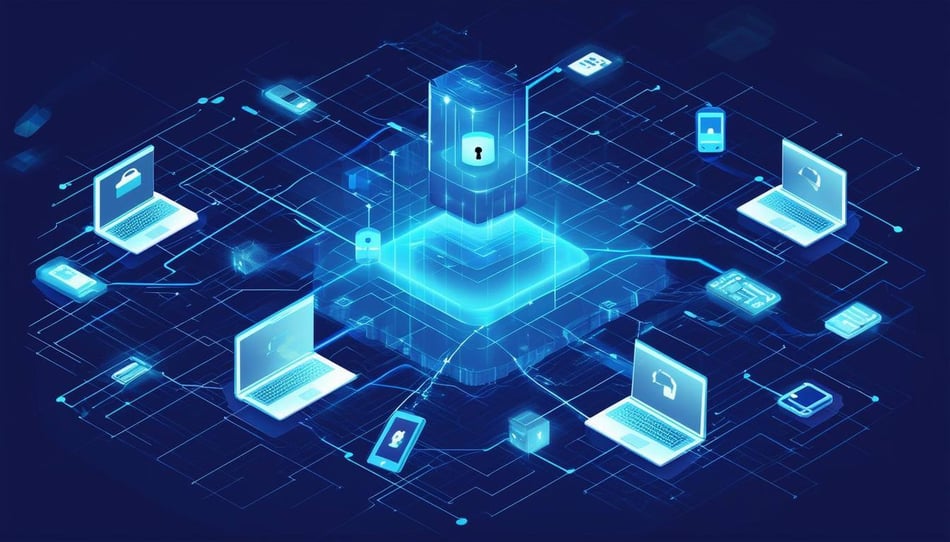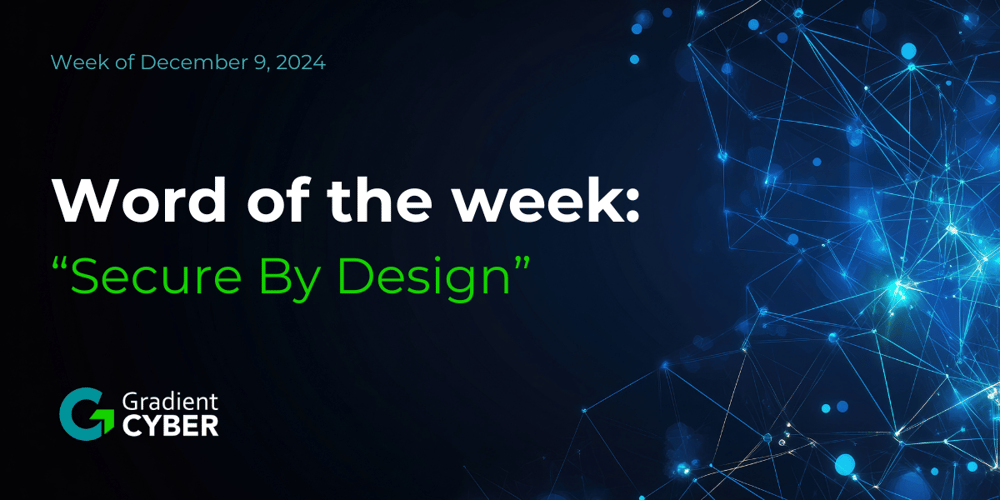Endpoints—including employee devices, mobile phones, laptops, and SaaS applications—are foundational for modern business. However, these very assets have become some of the most vulnerable entry points, presenting gaps that attackers increasingly exploit.
While traditional perimeter defenses focused on securing data centers and servers, today’s threat landscape is more complex. Endpoints, due to their sheer volume and varied configurations, often lack adequate protection, making them prime targets for threat actors. For mid-market businesses with stretched resources, endpoint security can feel like an overwhelming challenge. This post will unpack why endpoints are especially susceptible to attacks, how bad actors exploit these gaps, and how Managed Extended Detection and Response (MXDR) services can secure them.
Why Endpoints Are the Achilles’ Heel of Corporate Security
Endpoints represent an ideal target for attackers. They connect employees directly to business-critical data, giving adversaries an easy pathway to sensitive resources. Here’s why these devices have emerged as a key vulnerability:
-
Constantly Connected Devices
Endpoints, including employee laptops, mobile devices, and even IoT tools, are in constant communication with cloud-based services and company servers. Attackers know they’re always active, making endpoints reliable targets. -
High Rate of Device Variation
In the era of hybrid work, devices run on different operating systems, configurations, and security protocols. This diversity creates multiple entry points and potential vulnerabilities for attackers to leverage. -
Human Error
Employees are frequently targeted by social engineering attacks, such as phishing and spear-phishing, which exploit human tendencies to gain access to endpoints. A single click on a malicious link can grant attackers full access to a device—and, consequently, to the entire network. -
Limited Resources for Mid-Market Companies
Mid-market organizations often lack extensive, in-house security resources to manage and monitor every endpoint. Without a dedicated team or technology stack, these companies are left with blind spots.
Key Threats Targeting Endpoints
To effectively secure endpoints, it’s essential to understand the tactics attackers use to exploit their vulnerabilities. Here are some common threat vectors:
-
Phishing and Social Engineering
Attackers increasingly target users instead of systems. By tricking individuals into downloading malicious software or entering credentials on a fake login page, they can gain unrestricted access to the network. This tactic accounts for 90% of endpoint breaches, emphasizing the importance of user education alongside technical defenses. -
Exploitation of Software Vulnerabilities
Even with automatic updates, it’s common for endpoints to run outdated or vulnerable software. Attackers are quick to identify and exploit these vulnerabilities, gaining backdoor access to the device. For instance, unpatched applications, such as web browsers or office suites, are a popular target for endpoint-focused malware. -
Ransomware Attacks
Ransomware is often introduced through endpoints, where attackers take advantage of weak spots to install malware that encrypts files and demands a ransom. The ransomware attacks of recent years, from WannaCry to Ryuk, underscore the need for continuous endpoint monitoring. -
Privilege Escalation
Once attackers gain access, they can escalate privileges by exploiting flaws within the endpoint’s operating system. Elevated privileges give attackers control over the endpoint, allowing them to disable security tools, extract data, or move laterally across the network. -
Insider Threats
Sometimes the threat comes from within. Employees may unintentionally or intentionally compromise endpoint security, whether by mishandling data or by installing unauthorized software that creates vulnerabilities.
How MXDR Provides Comprehensive Endpoint Security
Managed Extended Detection and Response (MXDR) goes beyond the capabilities of traditional Endpoint Detection and Response (EDR) by providing multi-layered monitoring and response across endpoints, networks, cloud resources, and SaaS applications. Here’s how MXDR solutions fortify endpoint security against the tactics we’ve discussed:
-
Enhanced Threat Detection
MXDR platforms deploy behavioral analytics and machine learning algorithms that continuously monitor endpoint activity for anomalies. By identifying deviations from standard patterns, MXDR solutions can detect subtle signs of compromise that often go unnoticed by traditional security measures. -
Near-Real-Time Response and Isolation
In cases of detected compromise, MXDR can isolate affected endpoints to prevent lateral movement, allowing for rapid containment of potential breaches. This response is crucial in limiting the damage of threats like ransomware, which spread quickly through unmonitored endpoints. -
Comprehensive Coverage Across Devices
Unlike basic EDR, which may be limited to specific endpoints, MXDR solutions integrate monitoring across on-premises devices, mobile endpoints, remote desktops, and SaaS applications. This broader coverage provides visibility into the entire attack surface, essential for a hybrid work environment. -
Automated Incident Management
With automated workflows, MXDR can streamline the incident management process, coordinating actions such as blocking suspicious IPs, logging out compromised users, and updating configurations across endpoints. For resource-constrained mid-market companies, this level of automation reduces the burden on IT teams while maintaining robust security. -
Human-Led Threat Hunting
MXDR providers typically employ seasoned analysts to continuously search for threats that may evade automated detection. This human-led approach complements automated detection, ensuring that even the most sophisticated attack techniques are identified and neutralized.
Selecting the Right MXDR Solution for Endpoint Protection
For mid-market organizations, selecting an MXDR provider requires careful consideration of their unique operational needs and limitations. Here are key factors to look for in an endpoint-centric MXDR solution:
-
Full-Spectrum Visibility
Choose a provider that offers complete visibility over your endpoints, integrating data from network monitoring, cloud services, and SaaS applications to form a cohesive security picture. -
Cost-Effectiveness
Ensure that the MXDR solution is not only comprehensive but also budget-friendly. The best providers offer scalable solutions with pricing models that accommodate mid-market budgets without compromising on essential features. -
Proactive Incident Response
Look for MXDR services that offer near-real-time response capabilities, including automated isolation and containment of compromised endpoints. This rapid response is essential to thwarting advanced threats and preventing them from spreading across the network. -
Integration with Existing IT and Security Stacks
A robust MXDR solution should seamlessly integrate with your existing technology stack, working with current tools to enhance endpoint security rather than replacing or complicating it. -
Access to Skilled Security Analysts
Opt for a provider that combines automated technology with a team of experienced security analysts. Human expertise is critical to spotting advanced threats that automated systems may miss and to providing rapid responses that align with business needs.
Steps to Improve Endpoint Security Today
Improving endpoint security doesn’t have to wait. Here are actionable steps your organization can implement today:
-
Update and Patch Regularly
Establish a strict schedule for updating software and applying patches to close known vulnerabilities. Outdated software remains one of the biggest risks in endpoint security. -
Train Employees on Phishing Awareness
Continuous employee training is essential. Regular phishing simulations and awareness sessions can help employees recognize potential threats before they engage with them. -
Use Multi-Factor Authentication (MFA)
Implementing MFA adds an additional layer of security, making it more difficult for attackers to gain access through stolen credentials. -
Limit Access Privileges
Adopt a principle of least privilege to ensure employees have only the access necessary to perform their tasks, reducing the impact of potential endpoint compromises. -
Schedule Regular Security Audits
Periodic endpoint security audits can help identify gaps in protection and ensure that your security measures keep pace with emerging threats.
Schedule a Demo to See How We Secure Your Endpoints
Securing endpoints is a critical priority for organizations of all sizes. With the right MXDR solution, mid-market businesses can establish a strong defense across every endpoint, mitigating risks and ensuring business continuity.
Ready to see how our MXDR solution can fortify your endpoint security?
Schedule a demo with our team to learn how we can protect your organization’s most vulnerable assets and prevent costly breaches.





